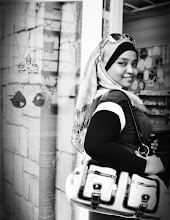This session it will be presented by Ashwin from Penang Tourism Action Council (PTAC).
Basically he is being talking about the background of the organization of the PTAC. Then he starts with the marketing tourism. What we really need to look in marketing are as stated below.
People hold a variety of misconceptions about marketing. Most common is its confusion with selling and advertising. Selling and advertising are actually types of promotion which is only a component of marketing. Marketing involves much more, including product/service development, place (location and distribution), and pricing. It requires information about people, especially those interested in what you have to offer (your "market"), such as what they like, where they buy and how much they spend. Its role is to match the right product or service with the right market or audience.
1. Statistic analysis
The first step will need us to do the analysis of the following section
# Product Analysis
# Position Analysis
# Prospect Analysis
The purpose of the analysis is to make sure that you are on the right track – who wants to be on the wrong track?
1) Is there sufficient demand for the product or service?
2) Can the product or service be provided on a profitable basis?
The way of communication ----> A.I.D.A
A – Attention : how to create attention of the product
I – Interest : is it bring any interest in the communication
D – Desire : to find Y factor
A – Action : take relevant action
3. Implementing
# Set time frame
# Monitor
Many well designed marketing plans fail because they are poorly executed. Businesses, agencies, and communities can increase the likelihood of successful implementation if they:
4. Evaluate
It is important that marketing efforts be continually evaluated. This will improve the effectiveness of marketing strategies by identifying differences between actual results and expected performance and determining likely reasons for the success or failure to objectives that have been plan earlier.
# Being an imitator
It is not wrong being an imitator as long we did not take other authorised. We can imitate the idea of the best marketing planning. This is because sometimes we could not see what other sees. Then by being an imitator, we can get the rough idea and try implementing it in our own way. Similar but not the same. For example we have in our market 7 Eleven, the imitator would be the Lima, J-Mart, Speed Mart and etc.
# Being an initiator
This surely is good initiative. People will look at us and will admire our work. Beside we are going to be the person where people would imitate our idea from. We can be such an inventor.
After the words from Ashwin from PTAC, we all sit in circle and discuss the resource and constrain that the participant face. Janet start the talk and keep asking people around are the constrains regarding their resource available. Lot of thing been highlighted. One of it from the Penang heritage Centre. This is where they have a lack of budget to run their program. Then they seek for the fund from the PEMADAM – “Persatuan Mencegah Dadah Malaysia”. They take the ex-drug addict to become the trishaw puller. Give them some work to be done. As well as the marketing tourism could be helping the jobless ex drug addict and as well gain the fund from the PEMADAM. This is call such an effective way of the constrain and resolution they manage to handle.
We end our session for that day at 1pm.













